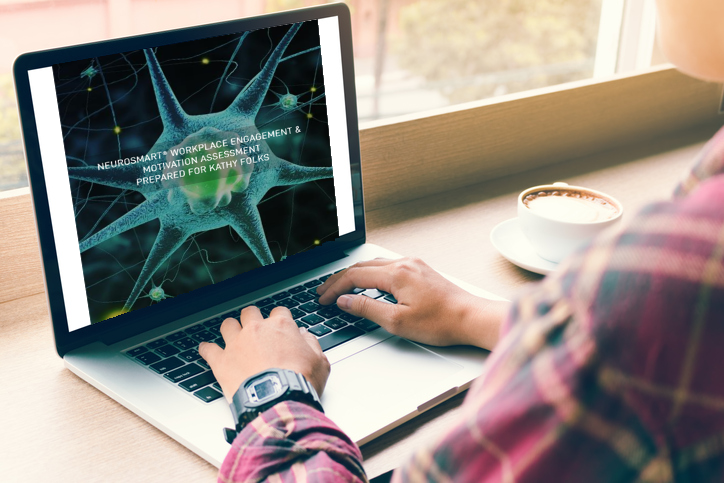The NEURO-M Predictive Employee Engagement Assessment uniquely measures & predicts dimensions of employee engagement from a neurobiological-motivational perspective. Sitting mostly below conscious awareness while driving emotions, attitudes, energy & behavioural choices, these are powerful insights for enhancing workplace environments & practices, as well as employee behaviours, performance, retention & well-being.
Go beyond moods to reveal intrinsic employee engagement, motivation & well-being

We are genetically programmed, as expressed through needs felt as emotions, urges & impulses, toward specific goals & actions vital for survival of self & species. In the workplace, based on neurobiology, neural consistency & the earlier work of Grawe & Rossouw, we have identified these as safety, connection, empowerment, task reward & identity. These needs are so strong that, at times alone but most commonly in combination, compellingly shape emotions & attitudes that drive intuition, behaviours & action choices.

The neurobiological processes of motivation interact with experiential learning to shape powerful instinctive responses to the threats & opportunities of an environment & context. For example, the dopamine-based rewards associated with taking risks, solving problems & conquering challenges see positive, engaged employees increase focus & effort, whereas the experiences of others lead them to fear risk or loss higher than those rewards in the workplace, driving avoidant responses that detract from positivity, performance, cooperation, fulfilment & well-being.

There are two basic motivational responses. The first is “approach”, where an action choice is aimed at increasing the satisfaction of a basic need (safety, connection, empowerment, task reward or identity). The second is “avoidance”, where action choices are responses to a threat of loss to need satisfaction. Due to the neurobiological processes involved, approach responses are more likely to enhance self-management, cooperation, initiative, problem-solving & wanting responsibility. Avoidance responses, while stronger, typically trigger quite the opposite behaviours.

Approach-dominant responses are better-aligned with employee engagement & well-being, as they are more likely to be positive in how they evaluate risk & reward, supporting increased intellectual capacity, focus & energy. Conversely, avoidance responses often include triggering fight/flight/freeze responses, which reduce cortical blood flow, in turn reducing the brain’s ability to process information, evaluate risk & think clearly, effectively, for all intents & purposes, momentarily reducing IQ while diverting energy and effort to fast, non-smart physical reactions.

Employees who associate their workplace & tasks with increasing satisfaction of their basic motivational needs (favouring approach responses) are likely to attend work, cooperate, care, perform to their best, take responsibility, solve problems & experience well-being. Employees who see their workplace as a threat or battleground are likely, at best, to dissociate, avoid responsibility & not attend (including resigning), & at worst, avoid accountability, seek conflict, steal, sabotage & act against the perceived source of those threats.

The NEURO-M Predictive Employee Engagement Assessment Report comes with an easy-to-read guide for every page. It includes employee engagement, both current & predicted, as well as basic motivational need level & fulfilment, which on its own has been a highly reliable predictor of attitude, effort, performance, behaviour & retention. You’ll also get a glimpse into the likelihood of passive vs active avoidance responses, so you can identify & respond to warning signs early. There are also charts for life balance, feelings of safety, values alignment & intentions to stay – the amount & depth of information is amazing.
By exploring underlying genetically-programmed motivations, responses & trends, the NEURO-M Predictive Employee Engagement Assessment allows you to understand & influence the underlying reasons employees feel, behave & perform the way they do. From employee development & career planning, through to job design & workplace environments, along with ongoing development & monitoring of management systems & skills, this allows you to build on strengths & address problems at their source. View here.
Contact us to discuss how NEURO-M Predictive Employee Engagement Assessments can specifically benefit you & your team.
